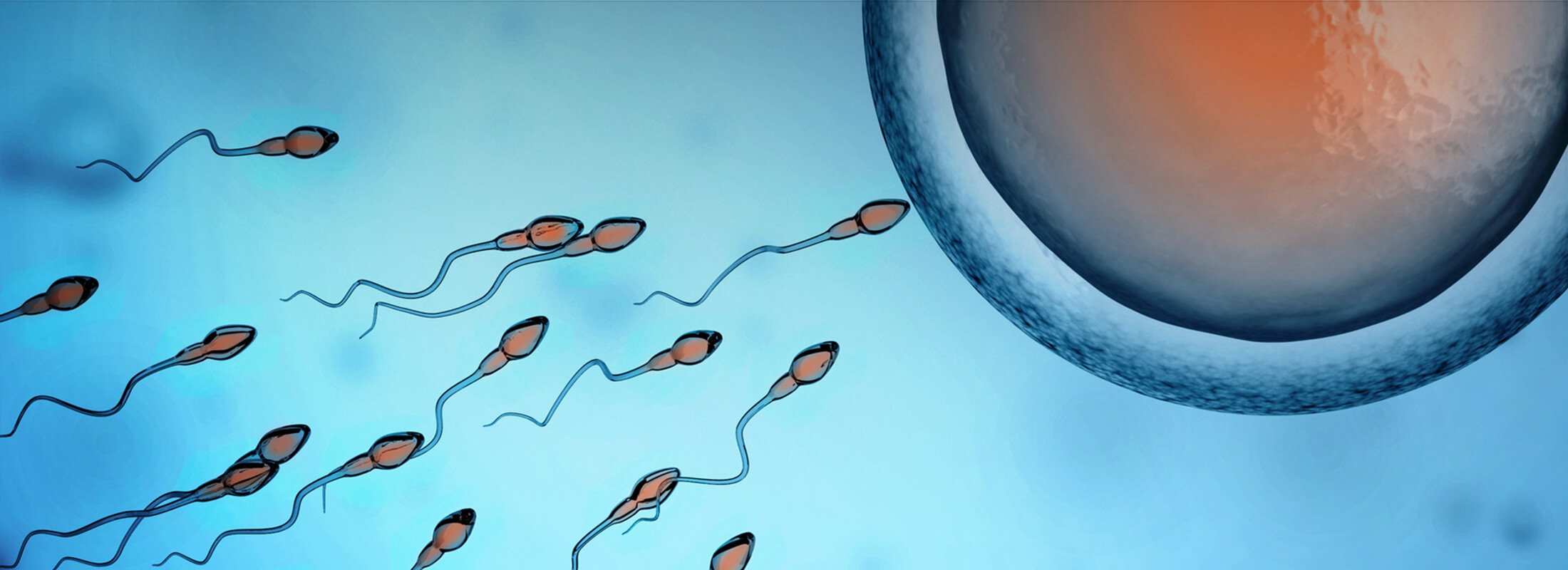IVF Overview
The Process of In Vitro Fertilization
Many couples wonder, 'What is in-vitro fertilization (IVF)?' IVF is a process by which the sperm and egg are fertilized in the laboratory and then placed back in the female's uterus once fertilization has occurred.
IVF Process
All of the eggs a female will ever have, are created while she is still in the womb of her mother. A female typically has approximately half million or so eggs. The eggs develop quickly, almost to the point of being able to undergo fertilization, but they are put into a state of suspended animation for many years until the female goes through puberty. With each month’s menstrual cycle some eggs start the process of maturation via a hormone named FSH (follicle-stimulating hormone). Approximately a dozen or so cells receive the message from FSH each month and start the process, but typically only one will fully respond to that message and the others involute or die off. The cell that fully responds to FSH becomes ripe, is expelled from the ovary, and moves into the fallopian tube where it waits for sperm to provide fertilization.
During the process of IVF, it would be very inefficient to only have one egg available to attempt fertilization. Therefore, the female is given very high amounts of FSH to try to stimulate many eggs to become ripe. These eggs (follicles) are monitored. The egg ripening is closely controlled by the reproductive endocrinologist so that a target number of eggs are all fully mature at the same point in time. Typically, the reproductive endocrinologist would aim for 10 to 18 eggs for retrieval. If too many eggs develop, the female may experience ovarian hyperstimulattion, which creates less healthy eggs and can possible damage fertility. If there are too few eggs, the chances are lower that fertilization and pregnancy will occur. Once the eggs have matured they are removed through the vagina using a very small needle and then placed with sperm in a laboratory dish (“in vitro”) as opposed to in the body or (“in vivo”).
The most powerful form of in vitro fertilization is intracytoplasmic sperm injection (ICSI). With ICSI, instead of a large number of sperm to try to create fertilization, only one sperm per ripe egg is injected into the cytoplasm of the egg, thus the name intracytoplasmic sperm injection. To understand the anatomy of this, you could consider a chicken egg. If we break open a chicken egg, the yellow yolk is the part of the egg that contains the DNA. All the clear fluid surrounding it is the cytoplasm. In the process of ICSI, the sperm is injected into the cytoplasm, and then the DNA within the sperm mingles with the DNA in the yolk of the female oocyte (egg) and approximately 70% of the time fertilization occurs.
Once fertilization occurs, these new cell masses are monitored in the IVF laboratory for approximately three to five days. By the fifth day, the cells have typically reached the blastocyst stage. Depending on what the couple had chosen, the cell masses are evaluated at the three to five-day stage. A decision is made as to how healthy they look and whether they will be able to survive the fresh embryo transfer (FET) and be implanted into the female’s womb and achieve pregnancy. Anywhere from one to three embryos are typically transferred, and again this is a very personalized decision that varies for each and every couple and their particular situation. The more embryos transferred, the higher the likelihood that a pregnancy will occur. However, along with this there would be a higher likelihood that multiple gestations may occur with the transferring of a higher number of embryos. The live birth rate with a single cycle of IVF varies largely in accordance with many factors, mostly female factors, such as age are the most important. Each program has different success rates, but the female age (egg age) is a critical factor across the board.
Even though the best embryos are chosen for the initial fresh embryo transfer (FET), there may still be some left that have adequate quality for freezing. If this is the case, once these embryos are frozen they can last for a significant period of time, even years, much like frozen sperm. They can then be thawed out at a later date, if for instance, the couple did not get pregnant on their first cycle of IVF or they had a child but wish to go through another cycle of IVF in order to have another child. With a frozen embryo, many of the other hormonal manipulations are not necessary, thus making a frozen embryo transfer cycle less economically and emotionally taxing for the couple.
Some favorable advantages about IVF include the rapidity of which it may be successful. For instance, it typically takes anywhere from four to six weeks to prepare a female and get her ready for oocyte (egg) retrieval. For a person of advanced maternal age, this may be a very powerful factor in leading the couple on their decision-making path. For some couples, IVF offers them a chance to not only start a family together but to have a somewhat increased likelihood of having a multiple gestation birth to really get their family started together in a big way. Interestingly, some studies have shown that up to 75% of couples are quite pleased with twins when undergoing an IVF cycle. Though I found this information somewhat surprising at first, on further thought when a couple has to work so hard to bring another life into this world, it makes some sense that more babies may lead to the feeling of more love (not to mention efficiency). Though IVF is somewhat expensive and intense, it is increasingly popular with couples facing fertility changes and its increasing success rates make it a viable option for many couples, despite the expensive price tag. For couples that are not in as much of a hurry, there are other options available such as tubal reversal, vasectomy reversal, artificial insemination and additional fertility treatment options. Take a look at the fertility clinics Dr. Bastuba works with in the region.






